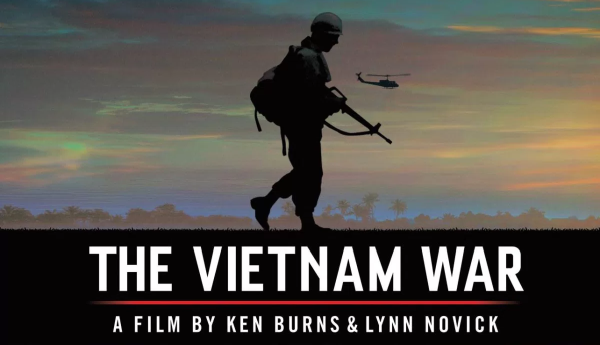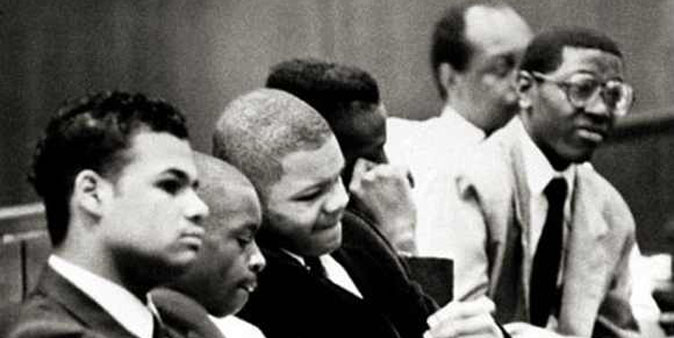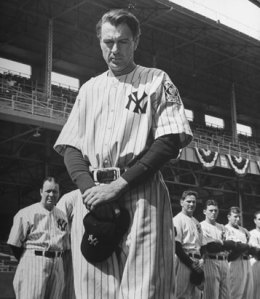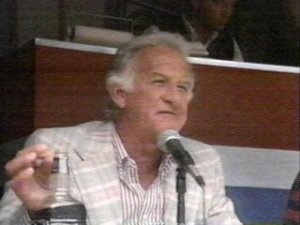The new PBS documentary by Ken Burns and Lynn Novick, The Vietnam War, is one of the best documentaries of the century and a superb history lesson, crucial to understand the America of today. It’s a Must See for Baby Boomers. For different reasons, it’s a Must See for Americans of later generations. The ten episodes of The Vietnam War can be streamed from PBS through October 15.
It’s impossible to overstate the effect of the Vietnam War upon Americans of my generation. I was watching TV at nine years old when I viewed a Buddhist monk setting himself on fire. Vietnam got my attention on that day and held it throughout my youth. I remember watching the television news, with the weekly “body count” scorecards for dead Americans, Army of the Republic of Vietnam (ARVN), Viet Cong and North Vietnamese Army (NVA). I was almost 15 when, overnight, the Tet Offensive changed the appraisal of the war by the mainstream American public. I was almost 19 when I got my draft lottery number. I was 22 and about to graduate from college when Saigon fell.
Last week, a carpenter about my age did some work at my house. When he arrived, he commented that he heard through the door that I was watching The Vietnam War. It took us about two sentences to get to the draft. Each of us instantly remembered our lottery numbers (mine was 65, his was 322). Both of us remembered where we were on February 2, 1972, the night of that lottery drawing.
For Baby Boomers, The Vietnam War provides context for our experience, along with some new revelations. Younger Americans who watch The Vietnam War will now understand what happened then and how it affects our culture and our politics to this day.
Burns and Novick tell their story mostly through first person accounts, from real people recounting their experiences 40-60 years ago. The American talking heads aren’t big shots, but people who were soldiers, protesters, POWs, journalists and family members who lost loved ones. But Burns and Novick also bring us Vietnamese witnesses – soldiers and civilians from the ARVN, Viet Cong and NVA. Including the Vietnamese points of view – as disparate as the American ones – works to complete the picture.
The Vietnam War also brings us new information about the era’s most iconic photos. We all remember the shocking still photo of the summary pistol-to-the-temple execution of a Viet Cong by a South Vietnamese police official; The Vietnam War brings us the original network TV film clip that was shot and shown only once on the TV news. There’s the unforgettable photo of the Kent State coed, with hands outstretched over the corpse of a fellow student; we also see a never-before-shown home movie clip shot of the scene by another student. Finally, we hear from the journalist who photographed the running Vietnamese girl burned by napalm, and we see film from that scene, too.
Who remembers that “light at the end of the tunnel” was coined by a French general in Vietnam, and later adopted by American brass (a bad choice, given the French experience)? We hear the phrase used again in a very grim joke in late April 1975.
The Vietnam War shows us that Le Duan had shouldered Ho Chi Minh aside and ran the North Vietnamese side of the war for its last eight years. Study of Le Duan provides us with some important lessons. First, never get in a war of attrition with a fanatic. Second, never let a fanatic run your postwar economy or foreign relations.
The Vietnam War is unmatched in tracing the evolution in the American public’s attitude during the long, long war. There was some public opposition to the War almost from the beginning, but the Tet Offensive in early 1968 convinced the great majority that the US could never win and needed to find a way out. But many Americans despised the anti-war protests. It was the protests that divided the American nation. Oddly, at the same time there was both a policy consensus (get out of Vietnam) and a cultural civil war.
And The Vietnam War, through his own words on White House tapes, exposes Henry Kissinger (the favorite of the American press) as the cynical sycophant that he was, ever flattering Nixon and conspiring to delay peace to favor Nixon’s political fortunes.
There is no more evocative aspect of The Vietnam War than its soundtrack, with 120 songs from the era from Jimi Hendrix, Bob Dylan, The Beatles, The Rolling Stones, Buffalo Springfield, Nina Simone, Simon and Garfunkel, Cream, Janis Joplin, Pete Seeger and even the Zombies, Procol Harum, Vanilla Fudge and Link Wray. One episode ends with my choice as the anthem for 1971 in America – Marvin Gaye’s What’s Going On. The songs are absolutely perfectly matched with the usual and spoken content, perhaps the most masterful use of popular music on a soundtrack that I have seen (and heard). You can even review the episode playlists .
Through October 15, you can stream, The Vietnam War here.










